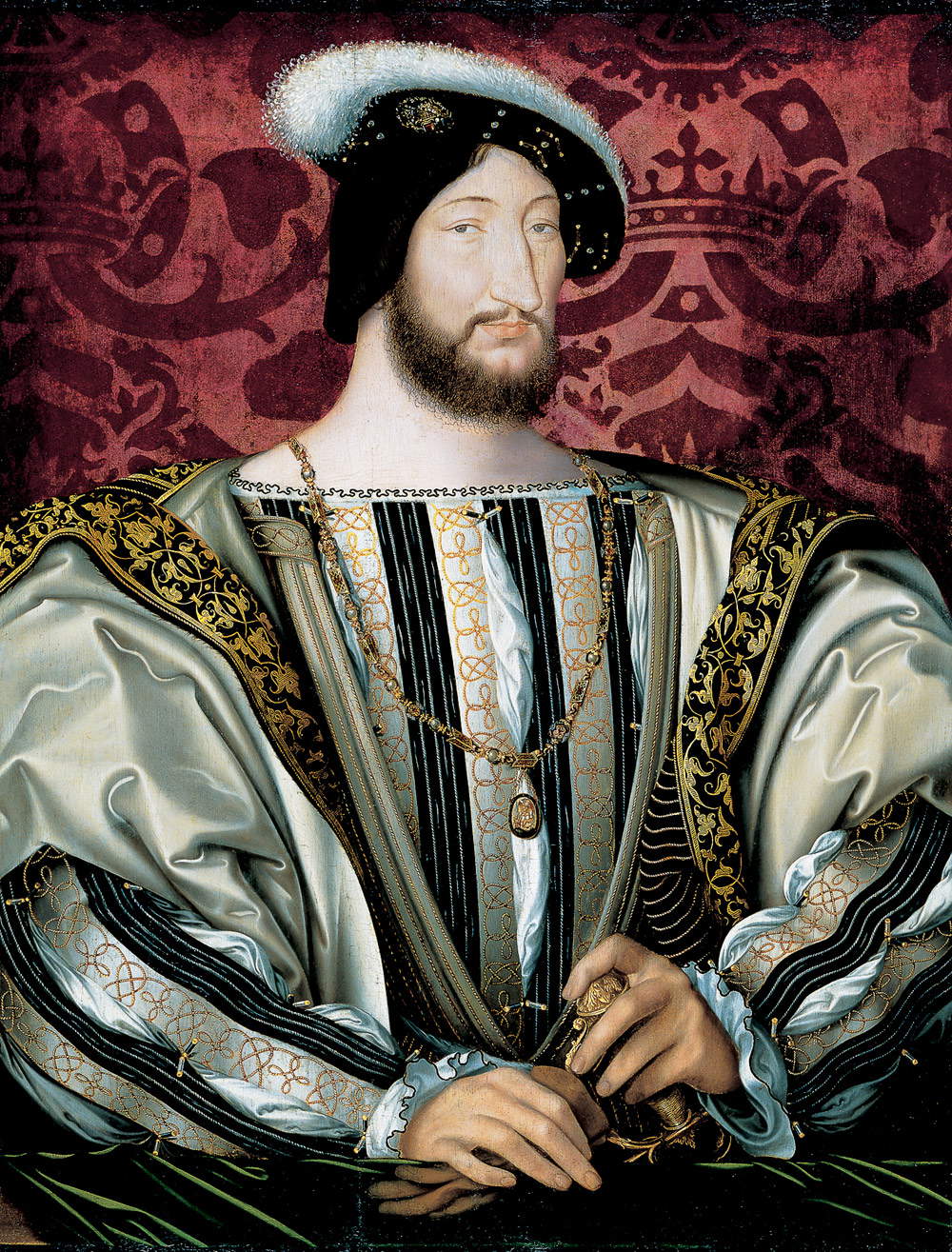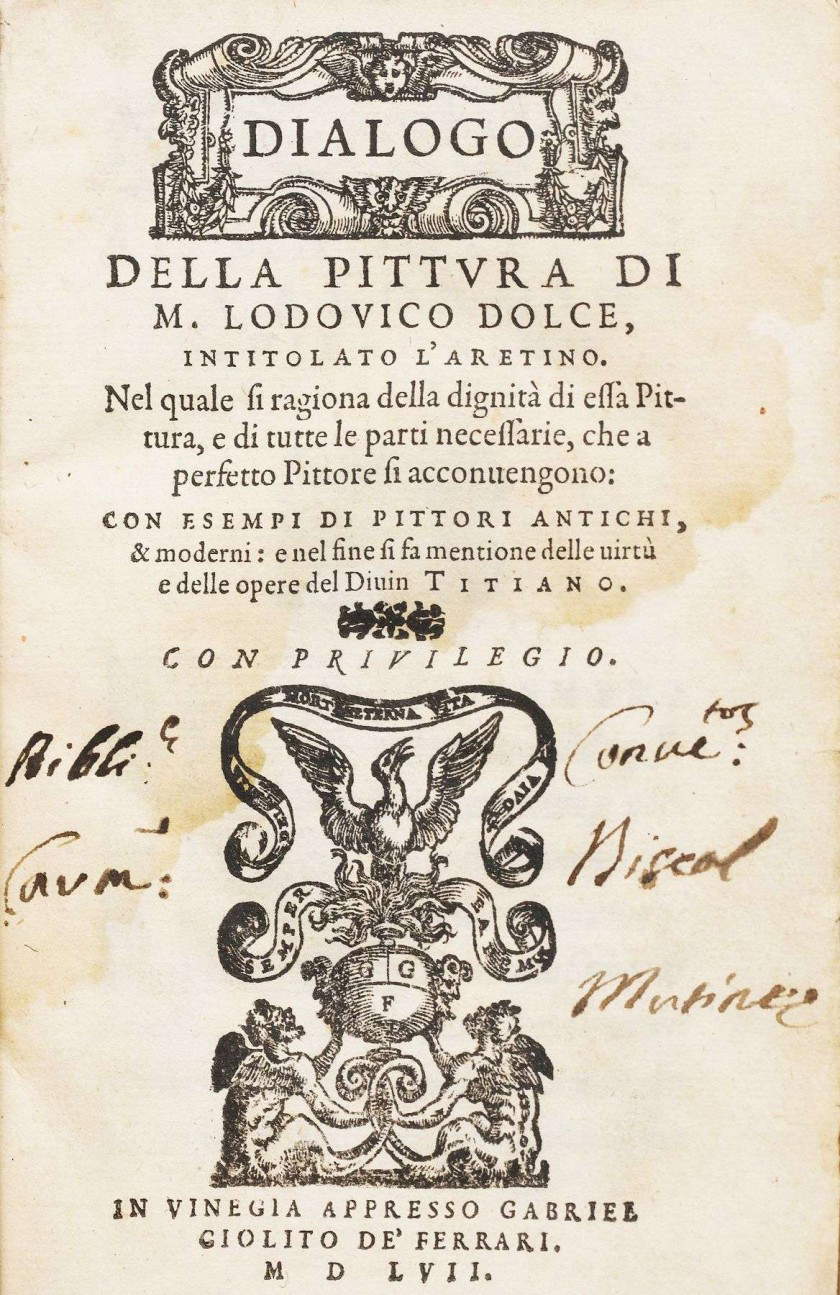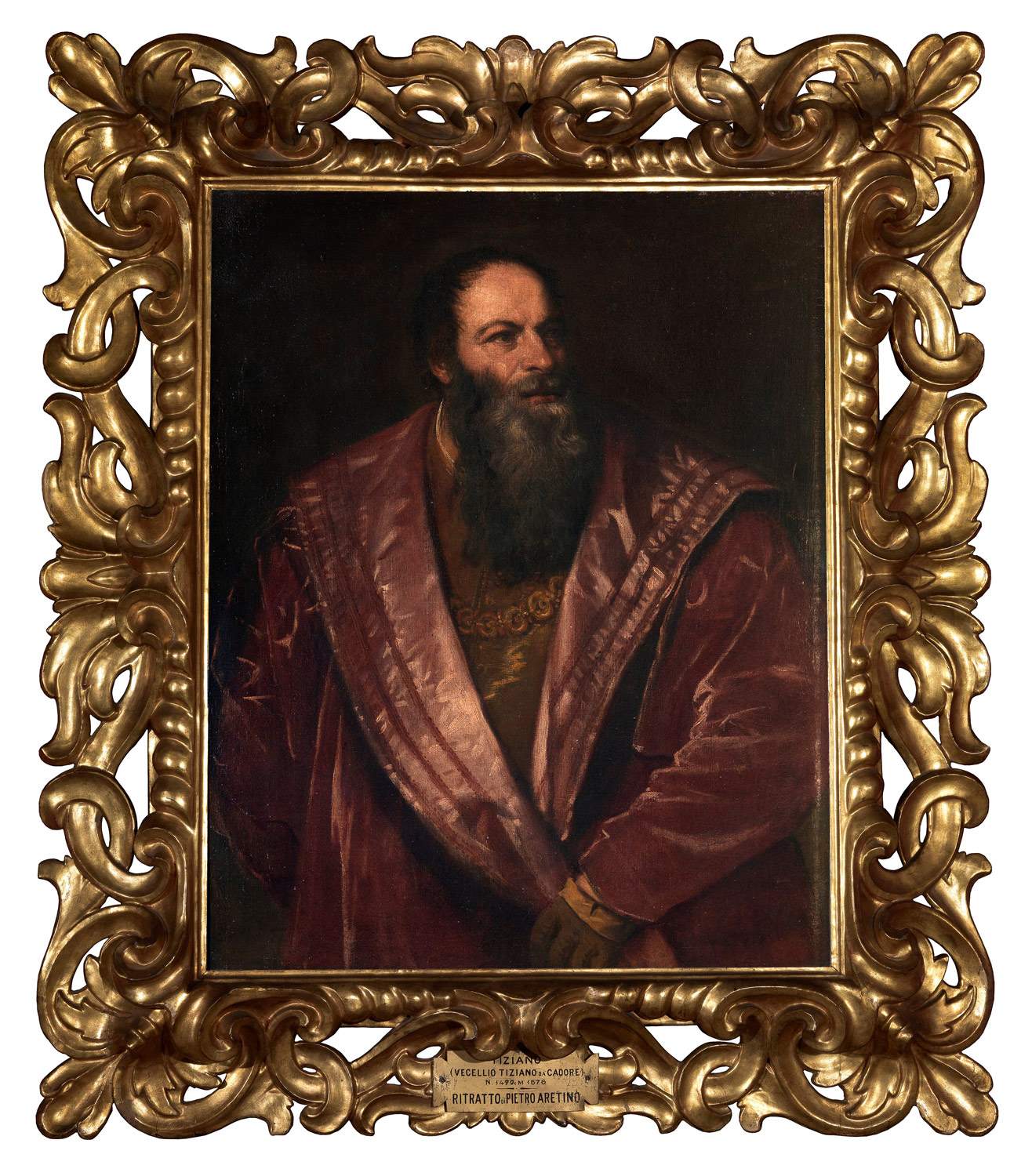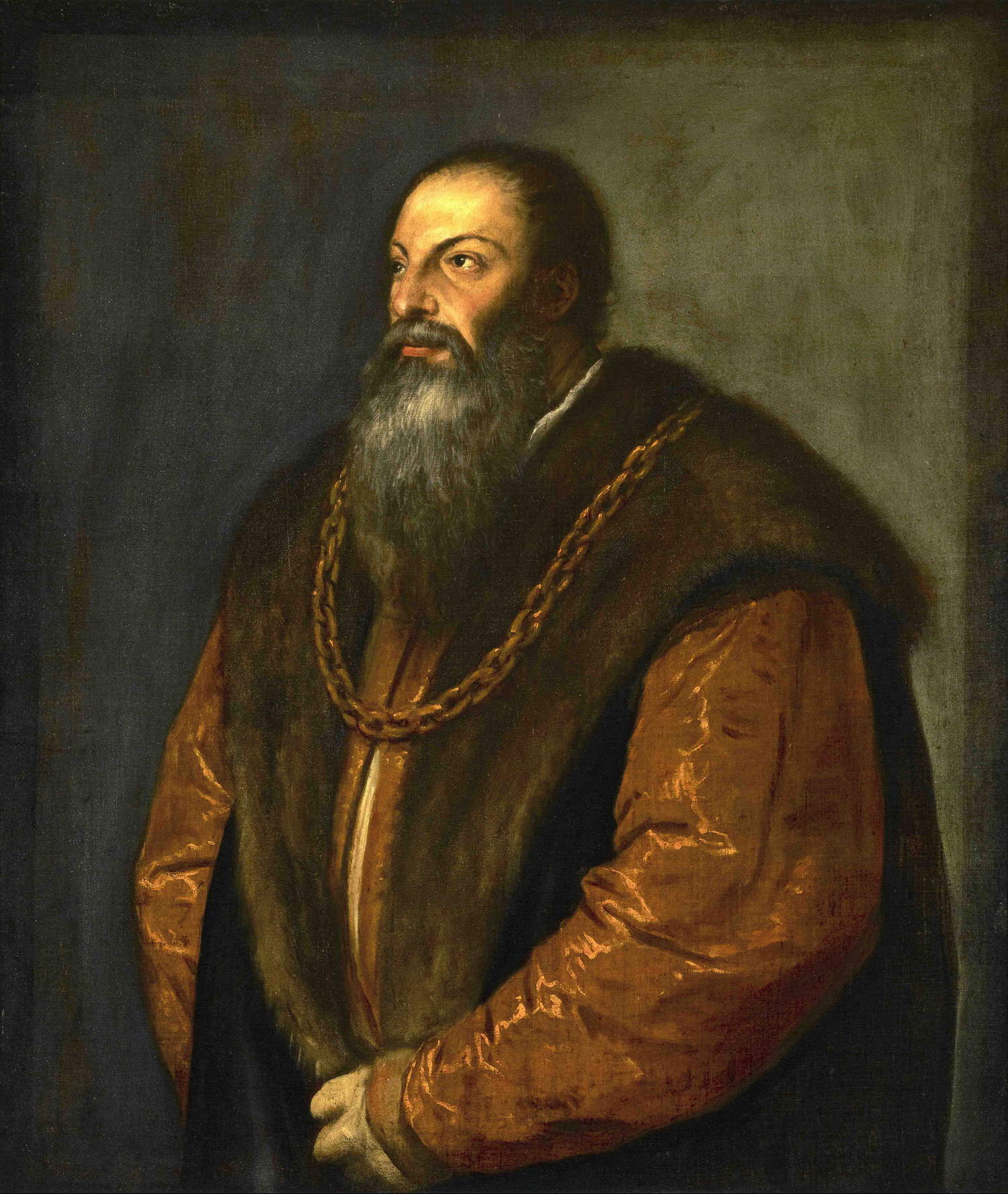More on the monographic exhibition dedicated to Pietro Aretino (Arezzo, 1492 - Venice, 1556), entitled Pietro Aretino and the Art of the Renaissance, which will be held in the Magliabechiana Hall of the Uffizi Gallery from November 27, 2019 to March 1, 2020. Last week we published an interview with two of the three curators of the exhibition, Anna Bisceglia and Matteo Ceriana. Today we publish an interview with the third curator, Paolo Procaccioli, one of the foremost experts on Italian Renaissance literature and professor of Italian Literature at the University of Tuscia, to profile Pietro Aretino and how he was regarded in his time by his contemporaries. Interview by Federico Giannini, editor in chief of Finestre sull’Arte.
FG. How will the exhibition tell the figure of Pietro Aretino and what approach has been chosen to present to the public a character with such a complex personality and story?
PP. There is a preliminary problem: this is an exhibition that has two sides. From a certain point of view, it is a very easy exhibition because in fact the catalog is already all set, in the sense that Aretino’s works (especially the letters but also the rest) are a chronicle of Italian artistic life from the 1920s to the mid-1650s. If anything, the problem is the selection: so from this point of view, we had no problem justifying the presence of the various works. The difficulty of course lies in the other aspect: why organize an exhibition in the name of Pietro Aretino. There are still, unfortunately (although they are no longer as absolute as they were up to thirty years ago), big prejudices regarding the author. These are prejudices that used to be moralistic (now we have removed them: this, at least, in most people of culture), but they still remain very strong prejudices relative to the weight, the role, the sense of his presence on the scene of the sixteenth century. And this is exclusively our problem, because for his contemporaries his presence was obvious. Suffice it to say that people like the king of France and the emperor competed for Aretino’s word, and they competed for it to the tune of extremely demanding and significant gifts as necklaces could be at the time and as pensions were. If we consider that in 1536 Aretino has from the emperor an annual pension, whereas up to that point he had always been in the French orbit, in some way owning the public image of Francis I in Italy, this of the pension becomes an extremely significant fact, evidence of an ongoing buying campaign in which the emperor took a position directly without Aretino advancing a candidacy. To say that limperatore snatches it from the king may sound like a strong expression, for effect, but the substance is this. In the circumstance Aretino changes sides but does so on his own terms, the first of which is that he is not an employee of the emperor but a super partes observer who takes it upon himself to tell the truth. Of course, the truth will be mainly that of the Spanish side, however, in the game of roles behavior such as that (that of the emperor and that of the writer) is significant of a public role being recognized. In response to this, a couple of years later, in 1538, Francis I, the previous patron, offered Aretino compensation that corresponded to what Aretino had already received from the emperor. I mentioned this episode to show that Pietro was not a character who went unnoticed, and this on the national and international political scene. The same happens on the literary scene, where Aretino can boast of very close relations with Bembo and is praised by Ariosto. We are accustomed to seeing these figures as alternatives to the writer from Arezzo, as representatives of opposite ways of experiencing language, literature, and poetry: this is the view that history has delivered to us, but then the facts tell otherwise and show us these authors in agreement and in the act of praising each other. On the artistic side, suffice it to mention that Aretino has very close relations as much with Raphael and his world, beginning with Giulio Romano and Marcantonio Raimondi, as with the world of Michelangelo, with Sebastiano del Piombo; as well as, later, with Titian, Sansovino, Tintoretto, Vasari, Leone Leoni. In short, practically all the art of the first half of the 16th century, excluding very few names. These are somewhat the underlying reasons for the exhibition, then whether or not succeeding in getting this speech across is another matter.
 |
| Jean Clouet, Portrait of Francis I (c. 1530; oil on panel, 96 x 74 cm; Paris, Louvre) |
 |
| Juan Pantoja de la Cruz, Portrait of Charles V, copy from a lost original by Titian (1605; oil on canvas, 183 x 110 cm; Madrid, Prado) |
We said at the outset that one of the main problems of the exhibition was to make a selection among the works to be presented to the public: how was this done?
There are on the one hand objective constraints, works that are not transportable, frescoes, works that are constrained by other exhibitions (in this period for example there are important exhibitions on Raphael and Giulio Romano, all strong interlocutors of Aretino), so some pieces could not be had for these kinds of reasons, but they are physiological reasons. What has been chosen, and this is no small thing, are objects (paintings, statues, medals, drawings, engravings) that give an account of the main strands of Aretino’s relationships with both artists and the powerful. These are objects that Aretino received as gifts or that he donated, that he saw and celebrated, that he commissioned, that he solicited, that he procured for this or that powerful person. The politics of gift that he pursued throughout his life is a politics that could only be carried out with the support (I like to talk about complicity) of artists. This is another detail that I think is interesting to point out: the word of Aretino is experienced by artists (this the facts tell us) as a word internal to their world, to their category. And this is on the basis of even biographical facts: consider that Aretino’s first printed work is a collection of Petrarchan-type poems, published in 1512, which is entitled Opera Nova. On the title page that text is called Opera Nova di Pietro pittore Aretino. So on his debut he presents himself as a painter. Does this mean that he was practicing painting when he was in Perugia? It is not known; the author of an anonymous poem written against him in Venice in the early 1930s says that it would have been better for him if he had stayed on as a painter: so, whether true or false, there was a rumor that Aretino had had a novitiate as a painter. The last work to be published with his name on the frontispiece, in 1557 (Aretino had been dead for a year), and before with the Index of Forbidden Books his name became unpronounceable, was Lodovico Dolce’s Dialogo della pittura entitled Aretino. So this character, from the time he opens his mouth in 1512 to the time he speaks for the last time, does so in the name of art by claiming direct, explicit competence, recognized by others. In the former case he had said it himself by signing himself “painter,” in the latter a writer reflecting on early sixteenth-century painting by arguing the arguments of Titian and the Venetians against those of Vasari does all this in the name of Aretino, who by the way was Vasari’s friend and a Tuscan. No fuller recognition of his authority could be given.
 |
| Ludovico Dolce, Dialogo della Pittura di M. Lodovico Dolce, entitled Aretino. In which is reasoned about the dignity of it Painting, and all the necessary parts, which to a perfect Painter are acconvengono; with examples of ancient, & modern painters: and in the end a mentione is made of the virtues and works of the Divin Titiano (1557; original edition printed in Venice by Gabriel Giolito de’ Ferrari; private collection) |
It is very interesting to talk about Pietro Aretino’s beginnings, because when we think of Pietro Aretino we usually imagine him at the height of his fortune and glory, in relationship with politicians, artists, and great men of letters. Of his childhood and beginnings we know little, but what can we say and how will the exhibition address this issue?
We know very little, especially what he tells us in the letters in which he constantly recalls his years and friendships in Perugia, things about which he always speaks in extremely positive, moved terms, and they are friendships that lead back to a world that straddled literature and art. This is an important element; it seems vague, but on the contrary it is a strong element because these references could be refuted. One of the characteristics of Aretino’s epistolary writing is that those texts are not published at the end of a career as was usually done: they are letters published within a short time of being sent (every four years he would publish a book of letters), so the risk of being disproved or outdone by himself was strong. He runs this risk, and we have no record of any letter (out of the more than three thousand he published) being challenged: no one, not even the enemies he had (the most ardent were literati who were his former friends), ever, not once, accused him of publishing a false letter. Facts like this help us to understand that the letters he wrote in which he recalled the seasons of the past are letters that have a rather high rate of reality and truthfulness. Then one can interpret and subject to analysis the fact that he pulls things in his favor, but that is inevitable in any militant text. This is as far as documentation goes. Then there is another detail: when Aretino arrives in Rome (and we do not know when he leaves Perugia for Rome) he arrives there and in fact is received in circles that were exclusive, such as the circle gathered around Agostino Chigi and the one around Leo X. By grace of what is Aretino co-opted there? We know mostly about his artistic friendships. For a long time he was presented as a half-joke, one of the many with whom Pope Leo was surrounded, but none of those was destined to pursue a career comparable to that of Peter. And when he later took the floor as Pasquino, that word was a politically important word: the form was buffoonish and comic, but if we think that those texts were transcribed by agents and ambassadors, it becomes clear that that word had a strong political weight, and then since only Aretino had the courage to present himself as Pasquino and no one questioned that identification, it seems to me that things are presented in a way that gives us a strong image of this character. The exhibition will indulge the ranks of relationships and friendships and show the difference in frequentations, very high artistic ones in the face of non-existent or almost non-existent literary relationships.
Aretino fits perfectly into these circles (we have mentioned that of Agostino Chigi and that of Leo X), and he immediately becomes quite a controversial character. But what is the judgment that contemporaries give of Aretino? What figure emerges from what his contemporaries thought of him?
I start from two examples. In the early 1920s, Aretino was on very close terms with the marquis of Mantua (later to become duke but in his Roman years he was marquis) and with the French circle. And he was to the point that Francis I asked Giovanni dalle Bande Nere to bring Aretino with him because he wanted to meet him. If politicians looked up to him with consideration and considered his an effective word, of artists it is useless to speak. Two references will suffice here as well: in 1524 Aretino finds himself portrayed by Sebastiano del Piombo and at the same time the subject of an engraving by Marcantonio Raimondi, that is, on the one hand by a representative, the highest, of the circle, by the way very restricted, of Michelangelo, and on the other by one of the engravers of Raphael’s workshop. Both portray Aretino in the guise not of Pasquino but of a perfect courtier. The result is that the two artists, expressions of competing worlds, say the same thing about Aretino, and it is anything but obvious. And the thing will then continue throughout the sixteenth century, because Aretino will have three portraits by Titian (one has been lost but two remain), he will have portraits by Moretto, he will have an endless series of medals, not to mention two portraits for public use that are extremely significant and yet cannot be in the exhibition: one is Vasari’s fresco in Palazzo Vecchio, in the hall of Leo X, which features Aretino next to Ariosto at the moment when Leo X makes his entrance into Florence (this is unlikely from a historical point of view but extremely significant from an ideal point of view). This fresco is roughly from 1558, so it is two years after Aretino’s death, at a time when they want to celebrate a city glory of the house of Medici as Pope Leo X was, and Aretino is a character who stands there, very recognizable, and Vasari himself says so in his Ricordanze. So in Florence, in public places, post mortem, that face could safely be displayed. The same thing in Venice, where in 1564 was placed, in the sacristy of St. Mark’s (thus in a place among those of greatest public prestige) the door of Sansovino on which there are several rectangular panels, and one of them has at its four corners little heads: they are those of Sansovino himself, his son Francesco, Titian and Aretino. Of course, the door had been made a few decades earlier, around the 1940s, but it was raised in 1564, when Aretino had already been on the Index for five years. And it was not an unfamiliar face: it was the face of the most portrayed citizen of the sixteenth century. Although he was on the Index, on the door of the sacristy of the city’s most important church this figure stood there to indicate a role. These are facts that in the sixteenth century put everyone in agreement: I do not exclude that there may not have been voices to the contrary, but they are not recorded, and we must assume that the presence in Florence and Venice of this character in those years did not represent a problem, in fact it was experienced as something natural. From my point of view, the purpose of the exhibition is to restore naturalness to associations such as those, which were obvious and taken for granted at the time: from the 1920s to the 1960s, no one would have been surprised, when talking about art, that Aretino figured among the insiders. We now marvel, to the point that perhaps for some such an exhibition may seem a provocation, but if we can recover the views of the time, everything becomes extremely logical.
 |
| Marcantonio Raimondi, Portrait of Pietro Aretino, by Titian (c. 1517-1520; engraving, 21.3 x 15 cm; New York, Metropolitan Museum) |
 |
| Titian, Portrait of Pietro Aretino (1545; oil on canvas; Florence, Palatine Gallery, Palazzo Pitti) |
 |
| Titian, Portrait of Pietro Aretino (c. 1537; oil on canvas, 101.9 x 85.7 cm; New York, The Frick Collection) |
Relationships that were natural at the time but were not taken so for granted later. We also talked about the moralistic prejudices that overshadowed the figure of Aretino in the centuries to come, and the prejudice regarding his role, his weight on the scene of the sixteenth century that in some ways still lingers. How did the moralistic prejudices about Pietro Aretino’s work come to be overcome once and for all, and what will be done to overcome those regarding his role on the sixteenth-century stage as well?
The story is relatively simple: it’s about doing a real restoration. But not a restoration to restore tone to some somewhat sagging physique; here it is simply a matter of recovering the original words. For the writer Aretino this was done with the national edition of the works. Now most of his works are available on the Web, but until a few decades ago you had to go to the library to read him. The fact that there were not even major works was already a judgment. Aretino, let’s put it this way, was not given the right to speak. So the national edition had the function of restoring this word and giving it back in its original terms, without the superfetations that time later associated, because the effect of the Index of Forbidden Books is an effect that strikes in the meantime by eliminating (there are very few earlier editions left and they are mainly outside of Italy), but it also strikes in another sense: if it is talked about, it has to be talked about in a certain way. So even the obvious, positive things are translated into the negative. So recovering the original meaning is the aspect that comes before all others. This has been done with the national edition, which is almost complete, very few texts are missing. On the other hand, from a historical point of view, it has been necessary to revitalize the relations of this character with the powerful: the problem, as far as this aspect is concerned, is that the work has not been carried on by professional historians, until a few years ago they were rather wary and did not give the right prominence to categories such as propaganda, which we know is always very important. I was referring earlier to the fact that the emperor and the king were fighting over this character and that their ambassadors in Venice were courting him. Consider that those ambassadors were personalities of the highest order, usually classicists armed with philological and doctrinal expertise of the highest order. Here, besides Aretino’s letters and the dedications of his books, it is the correspondence preserved in the archives (of Mantua, of Florence, of Simancas... ) that tell us that these personalities frequented Aretino’s house and that Aretino frequented their house. Listening to those voices is the precondition for interpreting Aretino’s word and recovering his public role.
Lastly, to move toward the conclusion: why should the public visit the exhibition?
I would say above all to restore a full meaning to an artistic Renaissance in which, I am obviously not speaking for specialists, the figure of a protagonist like Pietro Aretino does not figure. At the same time because it tells a story lived in the first person. The story of an embodied art, made friendship and politics but neither blind nor deaf, and for this reason alive, able to penetrate the reasons of the workshops and make them familiar to the general public of the readers of the time. It is a story steeped in passions and interests, and therefore not pure, but honest in stating one’s point of view, and in which, for the first time, the vicissitudes of the artists and with them dell’arte take center stage. They become one of the most important threads through which to weave the canvas that gives us a season for the penetration of which we too would not know how to do without that thread. Pietro Aretino is not the first writer to speak darte, but he does so with a very personal word that is not the aseptic and detached one of the treatiseist. This makes it possible for the rooms we have imagined to be traversed as so many exhibitions on the literature-art relationship in the Renaissance, on portraits and their subtle implications, on the so-called minor arts, on the diplomacy of the gift indancien régime society, on the Rome-Florence-Venice artistic polarization, and on the birth of darte criticism. Which will allow us to get rid of the stereotypes that arose around the character and to recover a point of view on the Renaissance internal to the Renaissance itself, a privileged point of view because it was a point of view shared by the artists and their patrons. If Aretino’s point of view had not been effective, responsive to the priorities of the moment, neither would the artists have gone along with him, nor would the patrons have turned to him for a privileged relationship with the artists. The success that he had in his lifetime is, I think, a demonstration of the effectiveness of his word and his role. So this guarantees us, if nothing else, the possibility of entering that world along a path that was recognized as legitimate at the time. This is not one of the many paths we can devise, it is not a figment of my imagination or that of the other curators or the director of the Uffizi: it is the acknowledgement of a reality. If the very word “Renaissance” continues to be on a universal level, and not just an Italian one, one of the most fascinating ones (so much so that every time we believe we are in front of some form of excellence we speak of “Renaissance”), if we continue to think of the Renaissance in these terms, we cannot forget that Pietro Aretino’s word is one of the interpreters that the very Renaissance recognized as authoritative. To ignore it, I think, can only give us of that civilization a vision I cannot say whether less true, certainly poorer. In all this there are, I think, the premises for the exhibition to arouse widespread interest, but it will of course be the facts (the numbers) that will confirm or deny them.
Warning: the translation into English of the original Italian article was created using automatic tools. We undertake to review all articles, but we do not guarantee the total absence of inaccuracies in the translation due to the program. You can find the original by clicking on the ITA button. If you find any mistake,please contact us.